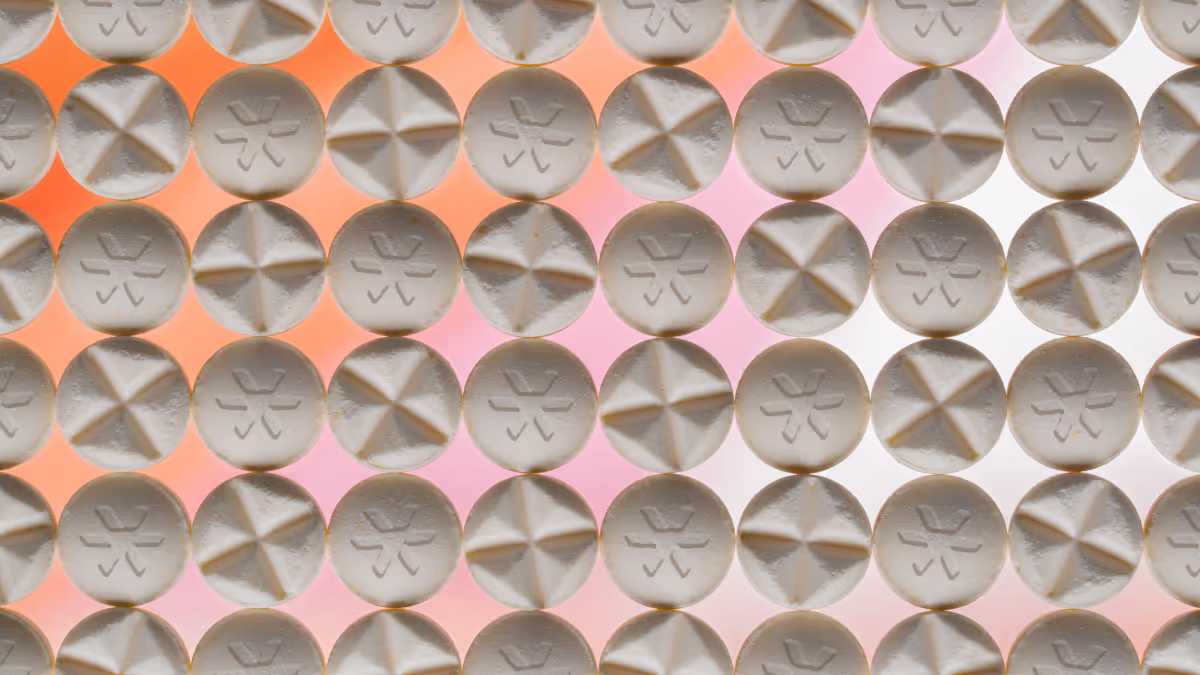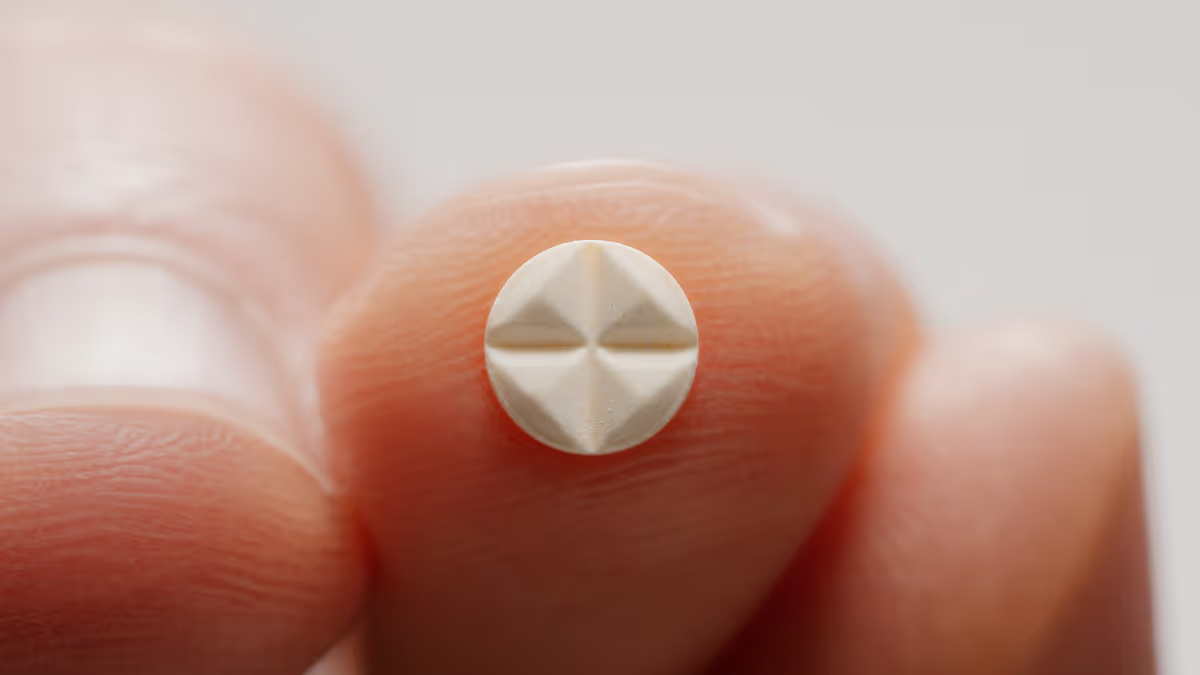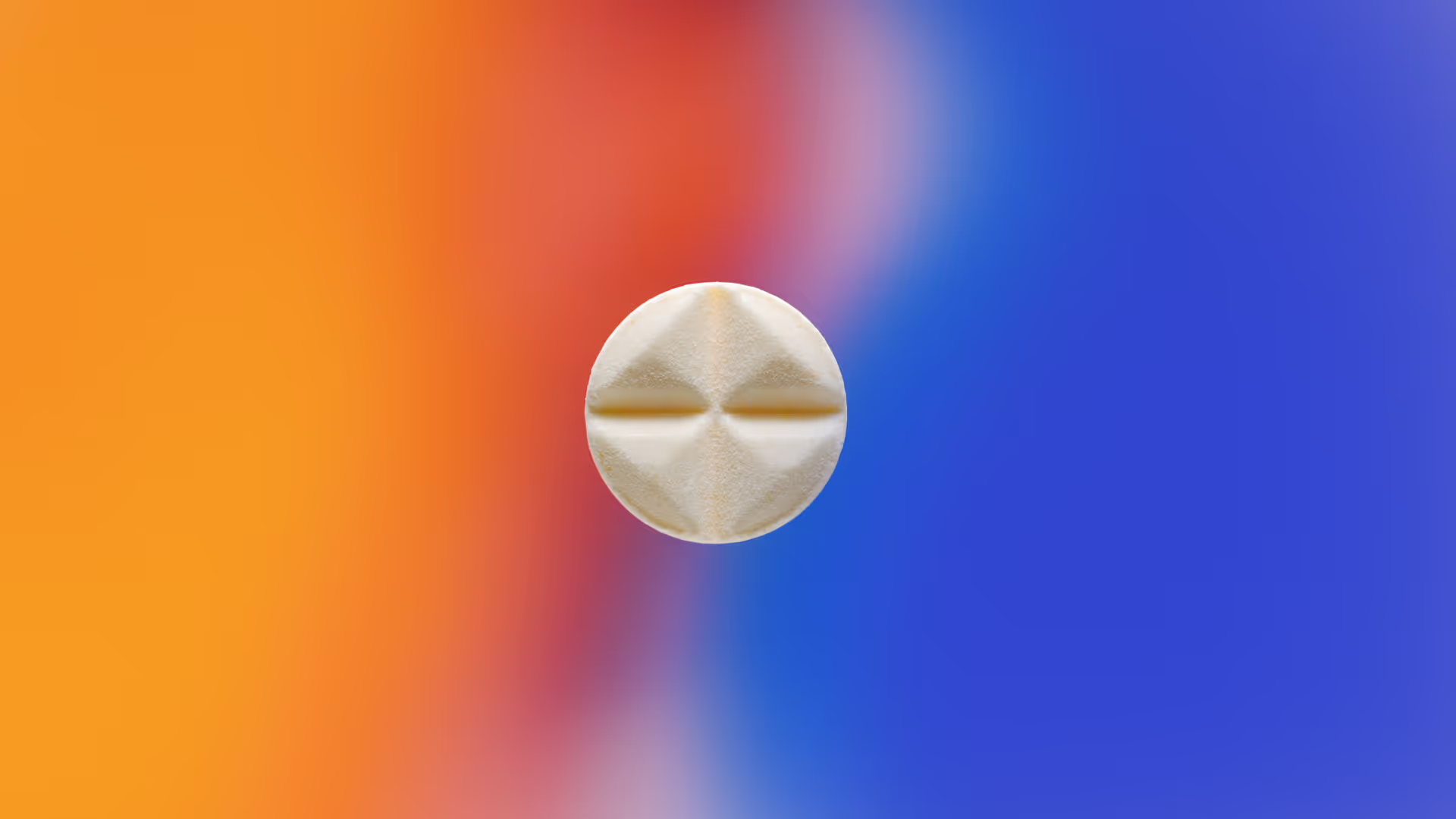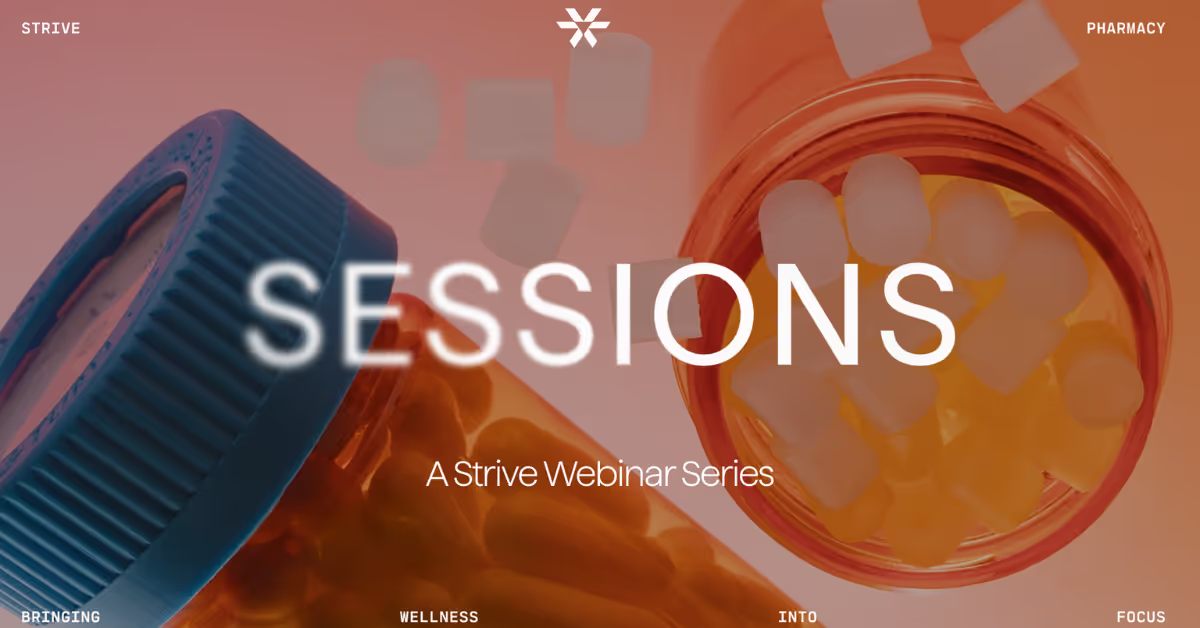LDN for Weight Management: A Provider's Guide to Personalized Care
70% of U.S. adults are classified as overweight or obese.1 But most people aren't just fighting fat; they're fighting fatigue, brain fog, insulin resistance, sleep disruptions, mood swings, and chronic inflammation. Weight rarely shows up alone, and that’s what makes treatment so complex.
It’s not just about nutrition or movement. It’s metabolic, hormonal, psychological, and often deeply personal. That’s why a growing number of clinicians are exploring alternative options like low-dose naltrexone (LDN) to support weight loss. It’s not a miracle drug, but it can be a powerful addition to a customized, multi-modal approach to weight management.
What is Low-Dose Naltrexone (LDN) and Its Relevance in Weight Management?
LDN is a lower-dose formulation of naltrexone, a medication originally used to treat opioid and alcohol dependence at higher doses. When used in micro to low-dose ranges (typically between 0.25 mg and 4.5 mg), it behaves quite differently. It has been shown to modulate the immune system, reduce inflammation, and influence endorphin production.2
Though not FDA-authorized for weight loss, largely due to the lack of large-scale dedicated trials rather than a reflection of inefficacy, LDN has sparked increasing interest and is an emerging option in the context of metabolic support, inflammation control, and appetite regulation.

Integrating GLP-1s and LDN for a More Personalized Approach to Obesity Care
Glucagon-Like Peptide-1 (GLP-1) receptor agonists such as semaglutide and tirzepatide have transformed the landscape of obesity care. Originally developed for type 2 diabetes, these medications now play a central role in weight management regimen by helping regulate appetite, delay gastric emptying, and improve insulin sensitivity. When paired with other medications like LDN, GLP-1s can support more sustainable progress in patients struggling with metabolic resistance or inflammatory drivers of weight gain.
Why Providers Are Exploring LDN for Weight Loss Support
In clinical settings, LDN has potential to support:
- Appetite and craving regulation (found in studies when used in combination with certain SSRIs)3
- Low-grade systemic inflammation4
- Insulin sensitivity and glucose control5
- Mental health and energy stabilization6
- Adherence to lifestyle modifications
LDN is often considered in the same category as adjunct medications. It is rarely a first-line intervention, but it can provide traction where lifestyle, nutrition, and conventional therapies have stalled.
What This Means for Your Practice
Integrating LDN doesn’t just help patients—it can help providers and practices:
- Broaden your medication toolkit with a low-risk, customizable option.
- Improve patient satisfaction by addressing metabolic barriers
- Stand out as a provider who embraces personalized medicine
- Re-engage frustrated patients who feel failed by conventional care
LDN is more than a prescription. It can be a powerful tool for providers who work with compounders who understand clinical nuance and patient-specific needs.
LDN's Impact on Appetite, Cravings, and Reward Pathways in Weight Management
LDN’s modulation of the endorphin system appears to play a role in how the brain interprets hunger, cravings, and reward cues. This has potential implications for patients who struggle with:
- Emotional eating
- Binge/restrict cycles
- Evening or late-night eating patterns
- Difficulty feeling full or satisfied
For patients with mood-related or reward-driven eating behaviors, LDN may help disrupt those cycles by influencing key pathways tied to cravings and emotional regulation.
Identifying Ideal Candidates for LDN in Weight Management
Providers may consider LDN as part of a medication plan for patients who:
- Have metabolic syndrome or prediabetes and struggle with appetite control
- Report persistent cravings, fatigue, or mood-related eating patterns
- Have attempted lifestyle changes with minimal progress
- Experience low-grade inflammation or immune dysregulation
LDN can be especially relevant for patients who have tried many approaches and feel discouraged. A personalized, integrative approach can help overcome plateaus in medication response and help support long-term adherence.

Integrating LDN into Personalized Weight Loss Plans
LDN is not meant to replace foundational care like nutrition, exercise, sleep hygiene, or mental health support. Instead, it is one of several modalities you can use to tailor weight loss plans for individual needs.
Some examples of how LDN is integrated into real-world clinical scenarios:
Case Study 1: LDN for Hashimoto's and Metabolic Support
A patient with Hashimoto’s thyroiditis, fatigue, weight gain, and carbohydrate cravings.
LDN can be added alongside thyroid management and anti-inflammatory nutrition to support immune modulation and appetite balance.
Case Study 2: LDN for PCOS and Insulin Resistance
A perimenopausal woman with PCOS, insulin resistance, and stubborn abdominal weight.
LDN can be introduced as part of a regimen including metformin, berberine, and strength training.
Case Study 3: LDN for Mood, Inflammation, and Disordered Eating
A male patient with depression-related overeating, poor sleep, and chronic joint pain.
LDN helps address inflammation and mood regulation, while also supporting changes in eating patterns.
Note: The case examples above are hypothetical clinical scenarios provided for educational purposes only. They do not represent real patients or constitute individualized medication recommendations. Rather, they illustrate how LDN may be contextually integrated into personalized, multimodal care plans to support patient-specific goals.
LDN Dosing: The Critical Role of Compounding for Precision
Dosing LDN for metabolic or appetite-related goals is often a process of titration. One of the standout benefits of compounded LDN is the availability of flex-dose tablets, designed for precision and customization. Flex-dose tablets, available in 1.5 mg, 3 mg, 4.5 mg, and 8 mg options, enable patients to titrate their dosage per provider guidance—adjusting it gradually up or down—until the optimal dose is achieved. This flexibility is especially valuable for those starting their LDN journey or fine-tuning their regimen to maximize benefits while aiming to minimize unwanted effects. By making titration simple and precise, compounded LDN ensures personalized care for every patient's unique health needs.
While generally well-tolerated, providers should be aware of potential mild side effects such as vivid dreams, sleep disturbances, or headaches—these often subside after initial treatment. LDN is contraindicated in patients currently taking opioid-based medications. As always, start low and go slow, adjusting based on individual response.
Commercially available formulations don’t offer this flexibility, and that’s where compounding pharmacies become essential. With a compounding partner like Strive, providers can prescribe customized formulations and fine-tune dosages. This precision allows for a more nuanced patient experience, especially in those who are sensitive, on multiple medications, or prone to side effects.

Why Strive for Compounded LDN?
At Strive, we’re here to make personalized medicine practical. That means working with you to deliver flexible and clinically sound solutions that put your patient’s needs first.
Here’s what you get when working with Strive:
- Flex-dose tablet options: Available in 1.5 mg, 3 mg, 4.5 mg, and 8 mg strengths to support precise, patient-specific titration
- Transparent sourcing: cGMP ingredients and full traceability
- Supportive pharmacist consultation: We’re here to talk cases, not just fill scripts
In complex cases, success often depends not just on the medication, but on how it’s delivered. That’s why personalization matters more than ever.
The Future of Obesity Care: Embracing Personalized Medicine Beyond Trends
Patients dealing with obesity are often navigating more than just weight. Hormones, metabolism, mental health, and lived experience all play a role.
Personalized care might include:
- Hormone labs and thyroid support
- Nutrition planning based on biomarkers
- Mind-body care that addresses trauma or disordered eating
- Medications that are customized rather than commercial, one-size-fits-all
That last element is where LDN may play a role: not to do the work alone, but to support the deeper systems that make sustainable weight change possible.
The Future of Obesity Care Is Adaptable. Are Your Care Plans Keeping Up?
As a provider, you're under pressure to get results, maintain patient safety, and stay evidence-based while also personalizing care for real people. It’s a perpetual balancing act.
You don’t need more protocols.
You need more flexibility inside them.
Adding LDN to your clinical framework allows you to put flexibility into practice. Especially when combined with compounding support that lets you refine, adjust, and individualize care at every level.
Strive for Smarter, Patient-Centered Solutions
Patients are asking for change–not only in outcomes, but in how care feels. They want to be seen, heard, and treated like more than a number.
Whether it’s through custom formulations of LDN or any other compounded medication, Strive is here to help you make medicine feel human again.
The future of healthcare isn’t standardized, it’s personal. And we’re here to help you deliver powerful possibilities.
Ready to explore LDN protocols tailored to your practice and your patients?
Connect with a Strive pharmacist.
References
- Patel AV, Patel KS, Teras LR. Excess body fatness and cancer risk: a summary of the epidemiologic evidence. Surg Obes Relat Dis. 2023;19(7):742-745. doi:10.1016/j.soard.2023.01.025
- Brown N, Panksepp J. Low-dose naltrexone for disease prevention and quality of life. Med Hypotheses. 2009;72(3):333-337. doi:10.1016/j.mehy.2008.06.048
- Kulak-Bejda A, Bejda G, Waszkiewicz N. Safety and efficacy of naltrexone for weight loss in adult patients: a systematic review. Arch Med Sci. 2020;17(4):940-953. doi:10.5114/aoms.2020.96908
- Younger J, Parkitny L, McLain D. The use of low-dose naltrexone (LDN) as a novel anti-inflammatory treatment for chronic pain. Clin Rheumatol. 2014;33(4):451-459. doi:10.1007/s10067-014-2517-2
- Choubey A, Girdhar K, Kar AK, et al. Low-dose naltrexone rescues inflammation and insulin resistance associated with hyperinsulinemia. J Biol Chem. 2020;295(48):16359-16369. doi:10.1074/jbc.RA120.013484
- McLaughlin PJ, Odom LB, Arnett PA, Orehek S, Thomas GA, Zagon IS. Low-dose naltrexone reduced anxiety in persons with multiple sclerosis during the COVID-19 pandemic. Int Immunopharmacol. 2022;113(Pt B):109438. doi:10.1016/j.intimp.2022.109438
Disclaimer: The information provided in this blog article is for informational and educational purposes only and is not intended as a substitute for professional medical advice, diagnosis, or treatment. Always seek the advice of your physician or other qualified health provider with any questions you may have regarding a medical condition. Never disregard professional medical advice or delay seeking it because of something you have seen or heard in this video/webinar. The creators and presenters of this content disclaim any liability for decisions made based on the information presented.
This information is not intended to be used as medical advice. Consult your healthcare provider before starting any over-the-counter (OTC) products or prescription medications. Certain medications may interact with your current prescription medications, medical conditions, or other supplements. Your healthcare provider can provide guidance tailored to your specific health needs. The potential benefits highlighted in this blog article apply to the specific ingredients, and may not necessarily apply to a combination of those ingredients. These statements have not been evaluated or approved by the FDA. Please see the cited references for more information regarding the content presented in this blog article.




















